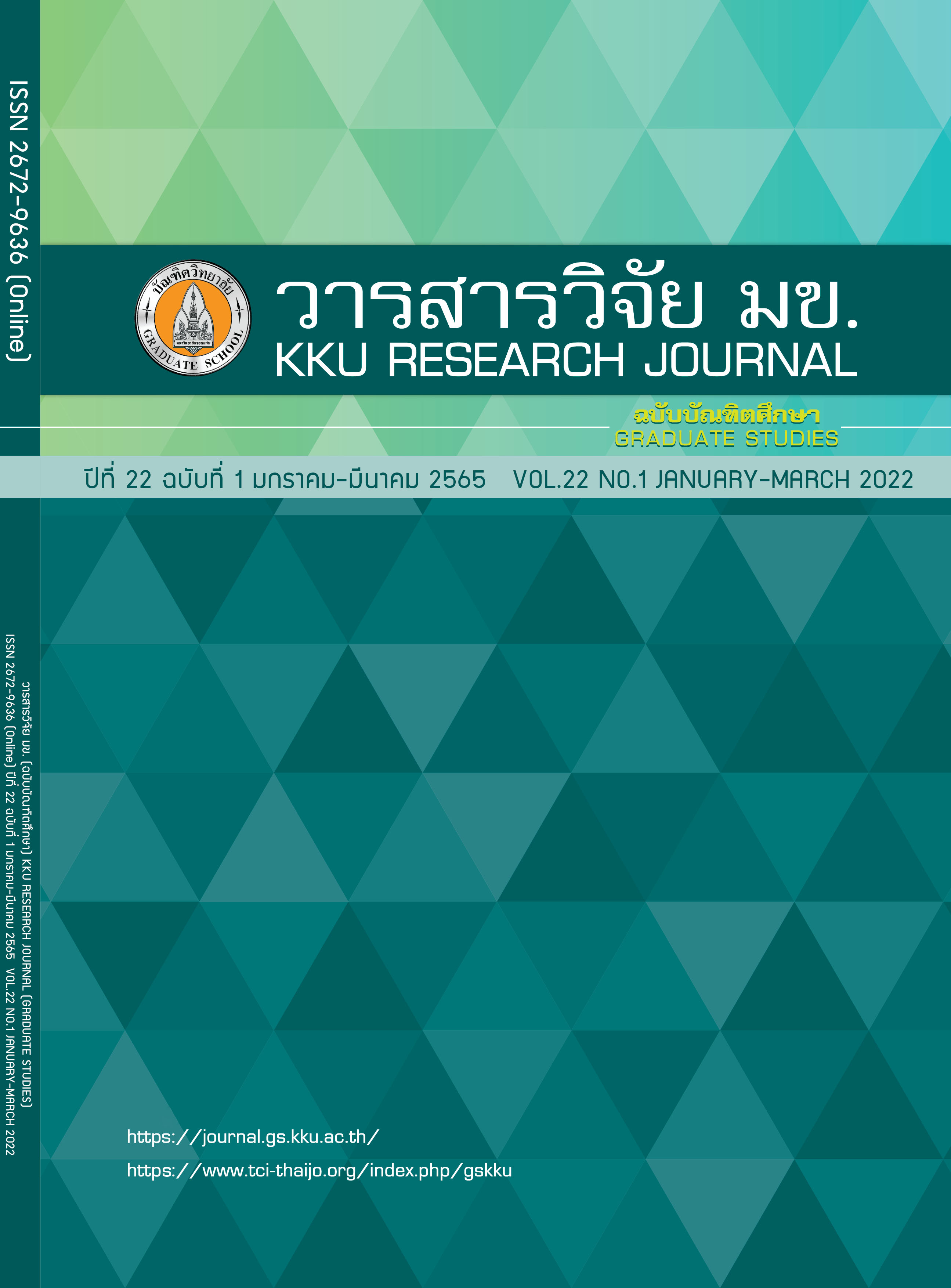The The Effect of Waste Dust Limestone Aggregate on Mechanical Properties and Thermal Conductivity of Cellular Lightweight Concrete Block for Masonry Walls
Keywords:
lightweight concrete, waste dust lime stone crushed, thermal conductivityAbstract
This research studied the effect of waste dust lime stone crushed aggregate on mechanical properties and thermal conductivity of cellular lightweight concrete block for masonry walls. Cellular lightweight concrete made from Portland cement, water, sand, air bubbles and waste dust lime stone crushed. The waste dust lime stone crushed is a garbage or waste material of the mill stone, Subpaiwan Kansila Co., Ltd. replacement of sand of 0, 40, 60 and 80 % by mass. All mixing ratios are constant and control with radiating flow values of 110±5%. Constant sand to cement ratio (S/C) of 1.25, foaming agent to water ratio of 1:40 and control the density of the foam is 40-45 kg/m3, constant foam volume of 1.5 % by mass. The compressive strength, unit weight, volume of water absorption, volume of porosity, sound absorption and thermal conductivity of concrete were tested. Test results showed that the 28 days compressive strength of cellular lightweight concrete of 67-113 ksc, unit weight of 1,100-1,300 kg/m3, volume of water absorptions of 15.26-20.15 %, volumes of porosity of 18.66-24.75 % and thermal conductivity of 0.44-0.58 W/m.K The results when the quantity of waste dust lime stone crushed increases, the compressive strength, unit weight and thermal conductivity are reduced. And make the volume of porosity and water absorption are increases. Moreover, using waste dust lime stone crushed that is garbage or waste material from the mill stone industry to maximize use. It adds value to industrial waste materials. It is also the basis for the development of cellular lightweight concrete mixed with waste dust lime stone crushed. For use in the sustainable construction industry.
References
ASTM C330 / C330M-17a. Standard Specification for Lightweight Aggregates for Structural Concrete. West Conshohocken, PA: ASTM International; 2017.
Chandra S, Berntsson L. Lightweight Aggregate Concrete Science, Technology, and Applications. Norwich, New York (USA): William Andrew Publishing; 2002. 450 p.
Neville A. Concrete technology. New York (USA): Longman; 1987.
Prachoom K, editor A study of compressive strength of concrete used quarry dust to replace sand. Technology and Innovation for Sustainable Development Conference; 2006 25-29 January 2006.
Balamurugan G, Peruma P. Use of quarry dust to replace sand in concrete – An experimental study. International Journal of Scientific and Research Publications. 2013;Volume 3(Issue 12).
ASTM C29 / C29M-17. Standard Test Method for Bulk Density (“Unit Weight”) and Voids in Aggregate. West Conshohocken, PA: ASTM International; 2017.
ASTM C128-15. Standard Test Method for Relative Density (Specific Gravity) and Absorption of Fine Aggregate. West Conshohocken, PA: ASTM International; 2015.
ASTM D854-14. Standard Test Methods for Specific Gravity of Soil Solids by Water Pycnometer. West Conshohocken, PA: ASTM International; 2014.
ASTM C136 / C136M-19. Standard Test Method for Sieve Analysis of Fine and Coarse Aggregates. West Conshohocken, PA: ASTM International; 2019.
ASTM C109 / C109M-20b. Standard Test Method for Compressive Strength of Hydraulic Cement Mortars (Using 2-in. or [50 mm] Cube Specimens). West Conshohocken, PA: ASTM International; 2020.
ASTM C642-13. Standard Test Method for Density, Absorption, and Voids in Hardened Concrete. West Conshohocken, PA: ASTM International; 2013.
ASTM D5930-17. Standard Test Method for Thermal Conductivity of Plastics by Means of a Transient Line-Source Technique. West Conshohocken, PA: ASTM International; 2017.
Nipon T, Kanokwan S. Utilization of Sanitary Ceramic Waste for Lightweight Concrete. Veridian E- Journal, Science and Technology Silpakorn University. 2019;Volume 6(Number 1).
Patcharapol P, Prinya C, editors. A Study of Properties of Structural Cellular Lightweight Geopolymer Mortar. Proceeding of the 11th Graduat Research Conference; 2010; Khon Kean University: Khon Kean.
Haruehansapong S, Pulngern T. Influence of water content on binder on compressive strength Microstructure And the displacement of cement mortar mixed with nano silica. TAC e-magazine. 2014.
Burachat C, Rewatt N, Natt M. Mechanical Properties of Lightweight Concrete Containing Andesite-Dusty Rock. KMUTT Research and Development Journal. 2011;Vol. 4:p.395-414.
Apivich P. The Development of Lightweight Concrete Mixed with Very Fine Crushed Rock from Stone Mill. Research journal. 2013;Vol.1:p.94-102.
Tasawa E, Asuo Y, Naoki N. The influence of differences in fine aggregate particle shape on various properties of concrete. Annual Collection of Concrete Engineering Research Papers and Reports, Inc. 1989:Paper No.1003.
Krish K, Prinya C, editors. Properties of Cellular Lightweight Concrete with Superplaticizer. Proceeding of the 11th Graduat Research Conference; 2010; Khon Kean University: Khon Kean.
Patcharapol P, Charoenchai R, Anand N, Natthawat S, Channarong L, Surasit L, et al. The Effect of Fine Aggregate on Properties of Lightweight Concrete with Aggregate from Recycled Block. The 20th National Convention on Civil Engineering; 8-10 July 2015; Chonburi, Thailand2015.
Demirboğa R, Gül R. The effects of expanded perlite aggregate, silica fume and fly ash on the thermal conductivity of lightweight concrete. Cement and Concrete Research. 2003;33(5):723-7.
TIS 2601-2556. Industrial product standards Cellular lightweight concrete blocks using preformed foam: Thai Industrial Standards Institute, Ministry of Industry; 2013.
Downloads
Published
Issue
Section
License
Copyright (c) 2022 KKU Research Journal (Graduate Studies)

This work is licensed under a Creative Commons Attribution-NonCommercial-NoDerivatives 4.0 International License.



